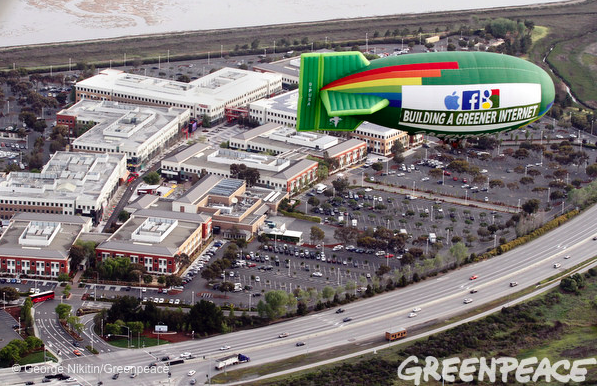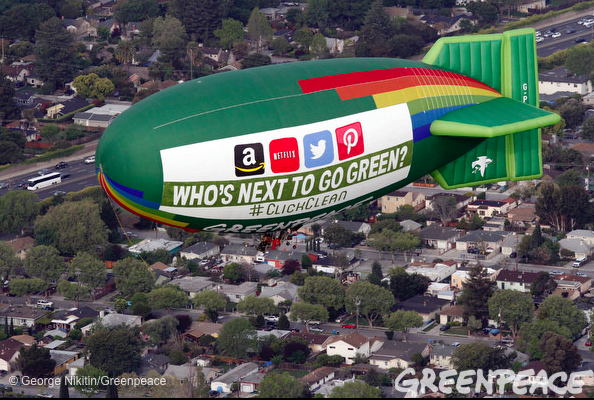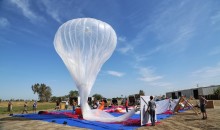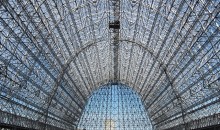Greenpeace blimp campaigns for greener internet
One day after releasing a report grading 19 technology companies on their energy consumption, Greenpeace flew a 135-foot-long blimp — called a “thermal airship” — over Silicon Valley to champion tech companies that have gone emerald green and shame those who are more of a tea green. The latter? Amazon, Twitter, Netflix and Pinterest.
Greenpeace’s report, “Clicking Clean: How Companies are Creating the Green Internet,” awarded its worst ranking to Amazon, which runs Amazon Web Services (AWS), when it came to the use of “dirty” energy, a category that includes nuclear and coal power, to run its data centers.
“Apple, Facebook and Google are racing each other to build a greener online world, and that’s a race that we all win, since it means a greener offline world for everyone too,” said Greenpeace Senior IT Analyst Gary Cook. “Amazon, Twitter, Pinterest and Netflix can still join the vanguard of the green internet and avoid permanently chaining their fast-growing services to dirty energy if they commit to powering their operations with 100% renewable energy now.”
According to the report Twitter uses only 21 % clean energy for its data centers. Pinterest, as a customer of Amazon Web Services, uses only 15% clean energy. Unlike Facebook, neither Twitter nor Pinterest have made any commitments to renewable energy, according to Greenpeace.

The Greenpeace Airship A.E. Bates flies over Facebook headquarters in Palo Alto, California, April 3, 2014, with a banner reading “Building a Greener Internet” and the logos of Apple, Facebook and Google. Greenpeace is saluting the online giants for powering the internet with renewable energy.
“At Greenpeace we love using Twitter and Pinterest, but we want to use them knowing they’re not hurting the environment,” David Pomerantz, Greenpeace Press Officer, explains. “Right now both companies are using rapidly growing amounts of electricity to power the data centers that store all of our Tweets and Pins, and most of that electricity for both companies is coming from polluting sources of energy like coal and gas. Facebook committed to 100 % renewable energy, and now is well on its way to that goal. We think Twitter and Pinterest can do the same.”
Amazon disputed Greenpeace’s claims. Netflix declined to comment. In a statement, Twitter said that it “believes strongly in energy efficiency and optimization of resources for minimal environmental impact. As we build out our infrastructure, we continue to strive for even greater efficiency of operations.”
The 135-foot long, 41-foot diameter thermal airship took off from the Palo Alto airport at 8:00 am and flew over the 101 highway rush hour commute on its way to Facebook’s campus, then over to Google’s campus, before returning to the airport to land after the 1 hour and 10 minute flight.
“We’ll definitely be trying to fly over the Bay Area again next week, weather permitting, and then beyond that,” – Greenpeace spokesman David Pomerantz.
Mr Pomerantz said Greenpeace did not want to telegraph its next move but added that it intended “to use all the tools at our disposal both to applaud companies leading the way building the green Internet and those who are falling behind.”





